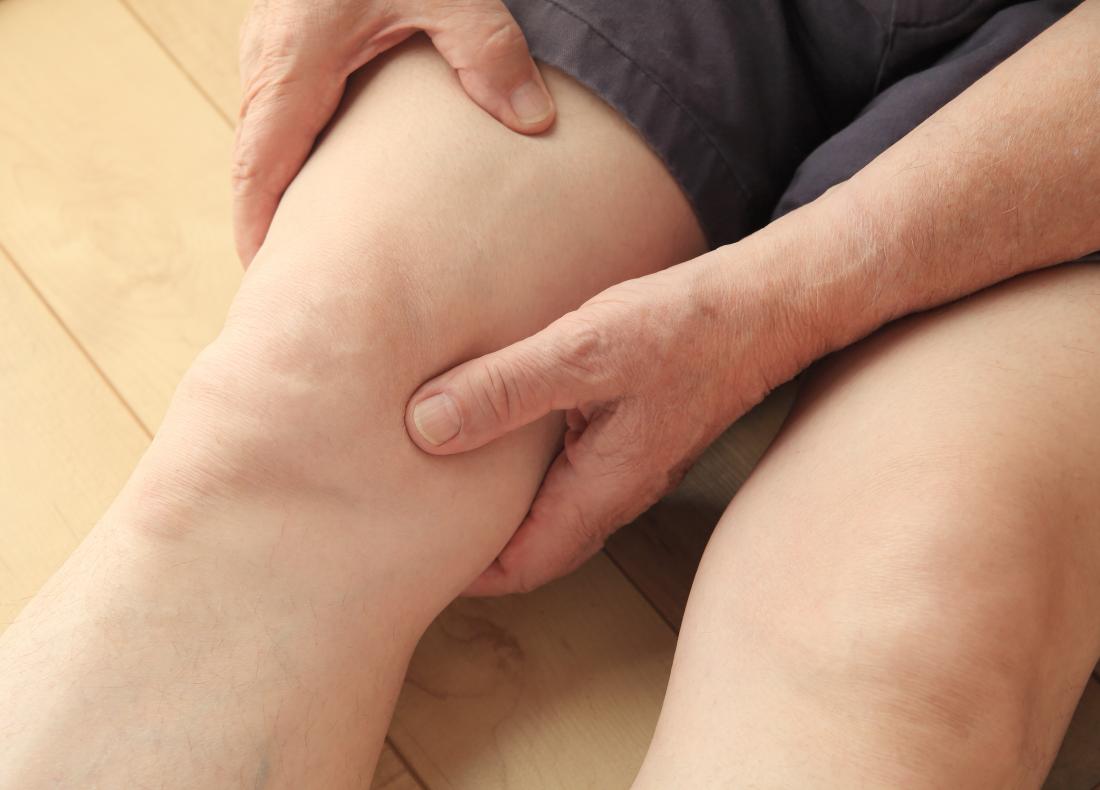The medical term for hair loss is alopecia, and it can affect any part of the body, including the legs.
Hair loss on the legs is also known as anterolateral leg alopecia. This is because it is visible on the front (anterior) and sides (lateral) of the lower legs. Another name for it is peroneal alopecia.
Many people with alopecia on the legs may not realize that they have it. As long as there are no other symptoms present, it should not be a cause for concern.
However, some people may notice symptoms in addition to the hair loss. This can sometimes indicate an underlying health condition that requires medical attention.
Read on to learn more about the different causes of hair loss on the legs, as well as how to treat this type of hair loss.
Certain factors, including some health conditions, can cause hair loss on the legs. The sections below discuss these potential causes in more detail.
Medications

Hair loss that occurs as a side effect of medication is known as drug-induced alopecia. This type of hair loss usually affects the scalp. However, it can also affect other parts of the body, including the legs.
One 2014 study found that 42% of participants reported hair loss on their arms and legs after using the antifungal medication voriconazole. For most people, this hair grew back after they stopped taking the medication.
Other medications that might cause hair loss include:
Alopecia
Alopecia areata is an autoimmune condition in which the body’s own immune system mistakenly attacks healthy hair follicles. It most often develops on the scalp, but it can cause hair loss anywhere, including on the legs.
According to the National Alopecia Areata Foundation, the condition affects around 6.8 million people in the United States.
Scientists have not yet identified the exact cause of alopecia, but there does seem to be a genetic component.
Coronary heart disease
There may be a link between coronary heart disease (CHD) and alopecia on the legs. For example, one 2018 study found that hair loss on the legs was more common in men with CHD than in those without.
Men with CHD also started losing leg hair at an earlier age than men without CHD.
Some other potential symptoms of CHD include:
- chest pain or angina
- breathlessness
- lightheadedness
Diabetes
Diabetes can also cause hair loss on the legs.
Over time, diabetes-related damage to the blood vessels can result in peripheral artery disease (PAD). In PAD, a fatty deposit called plaque builds up in the blood vessels inside the legs. This interferes with blood flow and, consequently, hair growth.
Other potential symptoms of diabetes include:
- frequent urination
- excessive thirst
- extreme fatigue
- slower wound healing
- tingling, pain, or numbness in the hands or feet
Thyroid problems
The thyroid gland plays an important role in the growth and maintenance of hair follicles. Having an underactive thyroid (hypothyroidism) or an overactive thyroid (hyperthyroidism) can affect the normal cycle of hair growth. This can result in hairs shedding too early.
Hairs commonly shed from the scalp, but they may also shed from other areas of the body, including the legs.
Though rare, some antithyroid medications — such as carbimazole and propylthiouracil — can also cause hair loss.
Some symptoms of hypothyroidism include:
Some symptoms of hyperthyroidism include:
- difficulty sleeping
- racing heart
- increased sweating
- anxiety
- tremors
Other potential causes
Some additional causes of hair loss on the legs include:
- friction due to wearing tight clothing
- infected hair follicles, or folliculitis
- nutritional deficiencies, such as a lack of iron or zinc
- hormone changes due to pregnancy or menopause
- recent illness or major surgery
Anterolateral leg alopecia is more common in men than in women.
In fact, as the authors of a
Anyone concerned about hair loss on their legs can see a doctor or dermatologist. A dermatologist is a doctor who specializes in skin, hair, and nail concerns.
To diagnose the cause, a doctor or dermatologist will:
- take a complete medical history, paying special attention to how quickly the hair loss began and how long it has continued
- examine the individual’s skin, paying special attention to the legs and any other areas with hair loss
- study the individual’s hair to look for signs of breakage and other damage
- order blood tests if necessary
When it comes to treating hair loss on the legs, the first step is to identify the cause.
If the hair loss is due to a medical condition, the doctor will treat that condition. If the hair loss occurs as a side effect of a particular medication, the doctor may lower the dosage or change the medication. In both cases, the hair usually begins to grow back after around 6 months.
Sometimes, hair loss on the legs is not accompanied by any other symptoms. In these cases, as long as the person is not concerned by the hair loss, treatment may not be necessary.
It is also worth noting that standard hair loss treatments do not seem effective in treating hair loss on the legs.
Many people may experience hair loss on the legs without even realizing. Unless there are other symptoms, it is unlikely to be a cause for concern.
However, hair loss accompanied by other symptoms can sometimes be a sign of a more serious health problem. Some conditions that can cause this type of hair loss include thyroid problems, heart disease, and diabetes.
People can see a doctor if they are concerned about hair loss on their legs. The doctor will work to diagnose and treat the issue.
Source link
 Black America Breaking News for the African American Community
Black America Breaking News for the African American Community